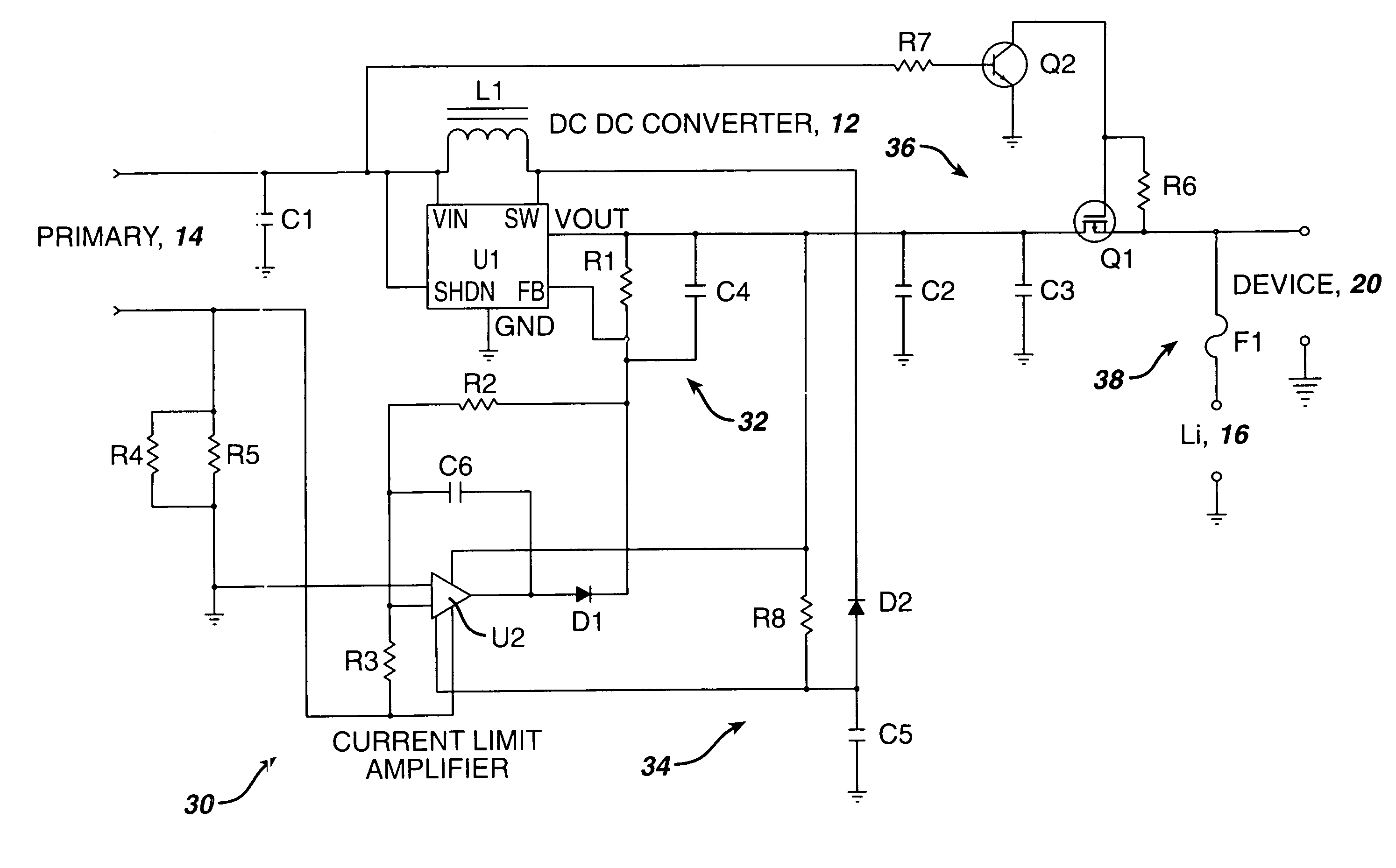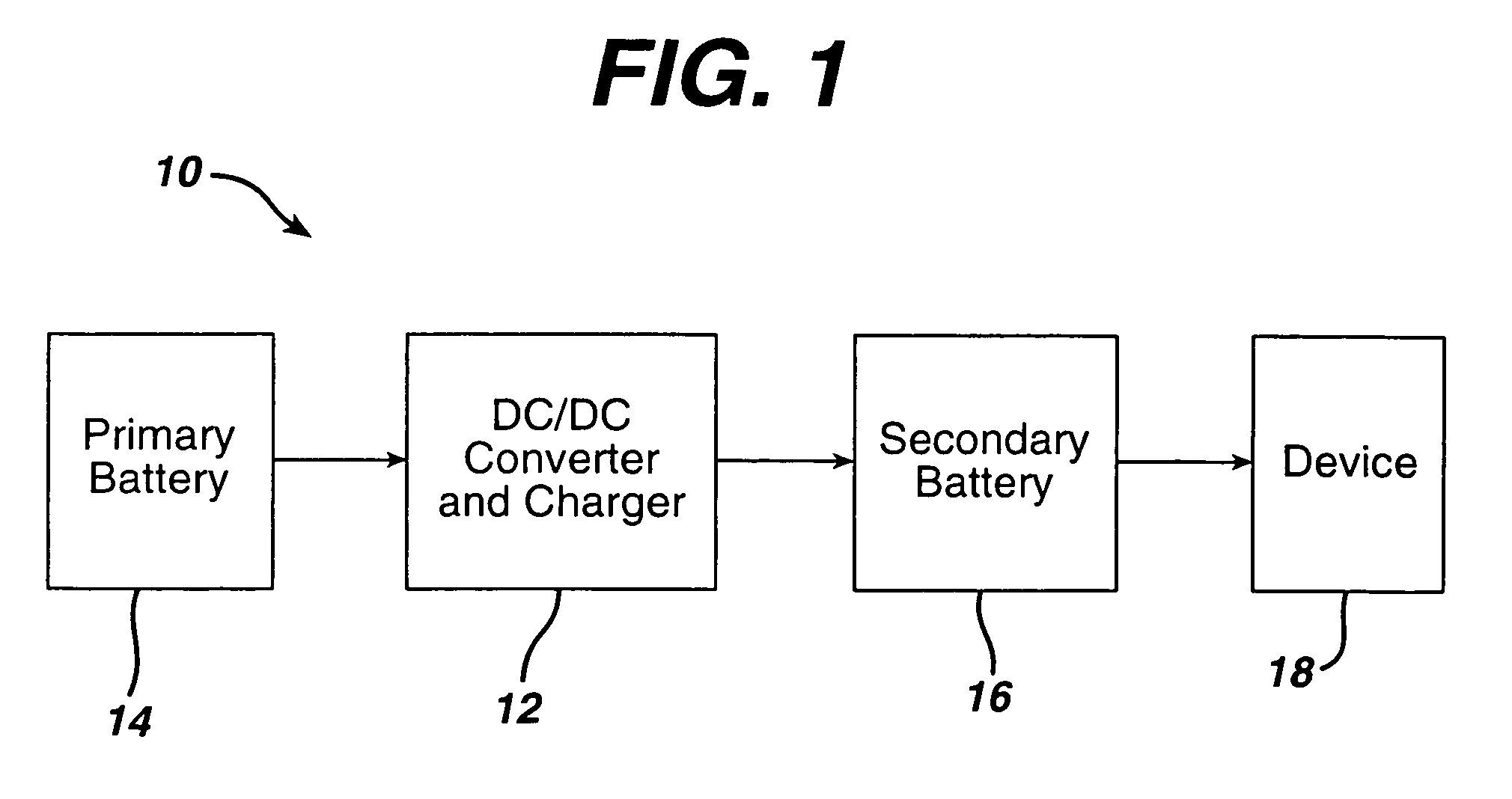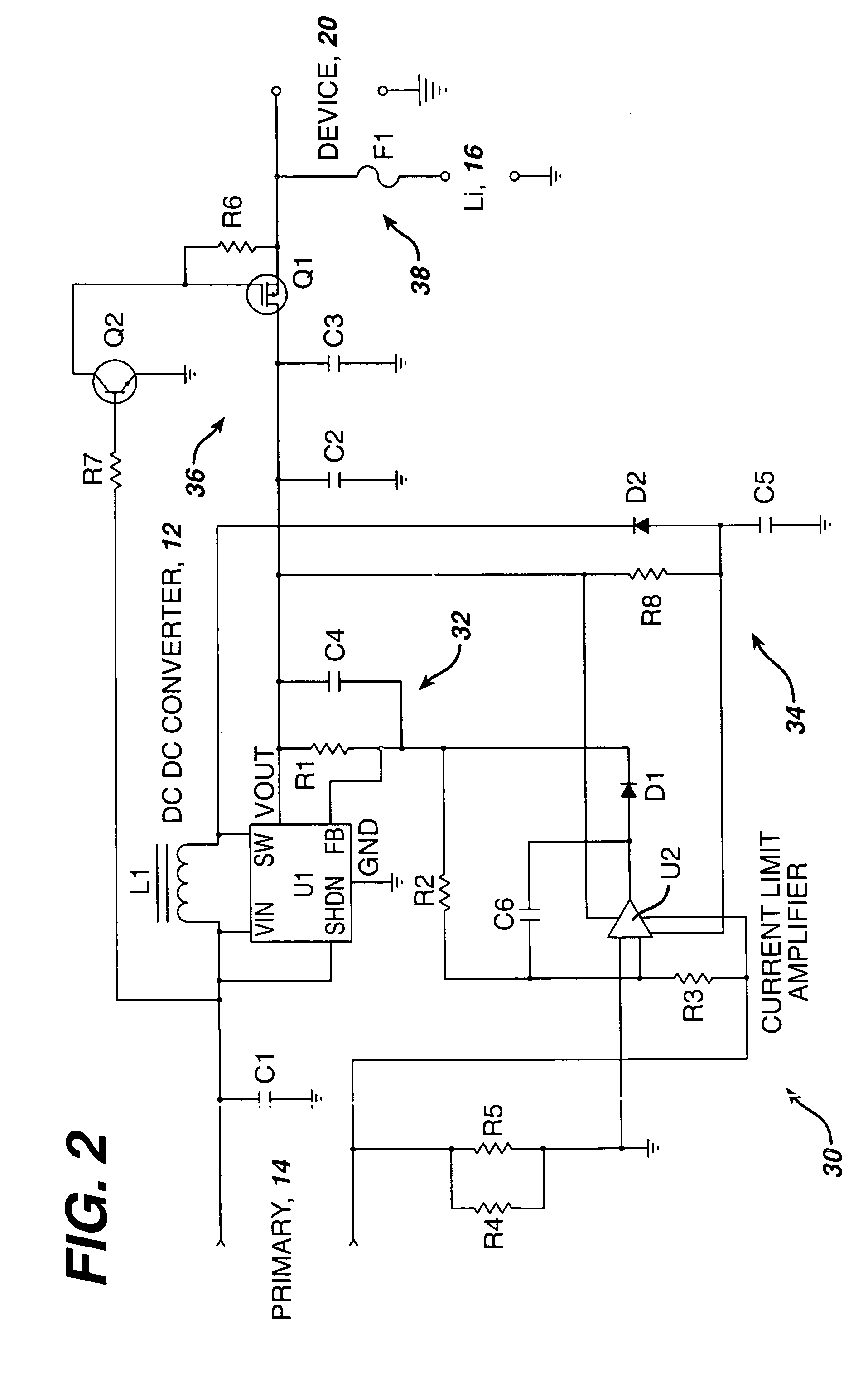Hybrid power supply
- Summary
- Abstract
- Description
- Claims
- Application Information
AI Technical Summary
Benefits of technology
Problems solved by technology
Method used
Image
Examples
Embodiment Construction
[0013]Referring to FIG. 1, a hybrid power supply 10 includes a switching type DC / DC boost type converter 12 that receives energy from a primary cell 14 and delivers the energy to a secondary, e.g., rechargeable cell 16. The rechargeable cell 16 delivers power, as needed, to the device 20. The device 20 can be any type of electronic device, especially a portable device such as a wireless device, e.g., a cell phone, personal digital assistant, digital camera, and so forth. The switching type DC / DC boost type converter 12 is configured to provide a fixed output voltage that is less than the charging voltage of the rechargeable cell 16, and is current limited to a portion of the charging current of the rechargeable cell. In this configuration, the switching type DC / DC boost type converter 12 acts also as a charger for the secondary battery. The rechargeable cell 16 can be a rechargeable Li− Ion type. Preferred examples include a Li− Ion or Li− Polymer rechargeable cell. These rechargeab...
PUM
 Login to View More
Login to View More Abstract
Description
Claims
Application Information
 Login to View More
Login to View More - R&D
- Intellectual Property
- Life Sciences
- Materials
- Tech Scout
- Unparalleled Data Quality
- Higher Quality Content
- 60% Fewer Hallucinations
Browse by: Latest US Patents, China's latest patents, Technical Efficacy Thesaurus, Application Domain, Technology Topic, Popular Technical Reports.
© 2025 PatSnap. All rights reserved.Legal|Privacy policy|Modern Slavery Act Transparency Statement|Sitemap|About US| Contact US: help@patsnap.com



